Elsaß-Lothringen |
|
|
|
| Übersicht – Contents: | |
Elsaß-Lothringen |
|
|
|
| Übersicht – Contents: | |
Flaggen – Flags: |
|
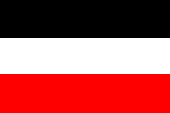 |
1871–1918, Landesflagge – flag of the country |
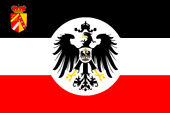 |
1891–1918, Landesdienstflagge – official flag of the country Quelle/Source: nach/by: Flags of the World |
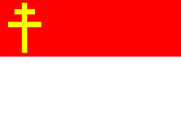 |
1912–1918, inoffizielle Flagge des Reichslandes Elsass-Lothringen – unofficial flag of the imperial province of Alsace-Lorraine Quelle/Source: nach/by: Jürgen Kaltschmitt |
 |
11.11.–17.11.1918, Flagge der Republik Elsass-Lothringen – flag of the republic of Alsace-Lorraine Quelle/Source: nach/by: Flags of the World, Jürgen Kaltschmitt |
|
|
|
| regionale Flaggen – regional Flags: | |
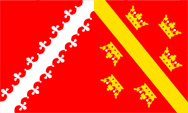 |
historische Flagge des Elsaß – historic flag of Alsace Quelle/Source: nach/by: Flags of the World |
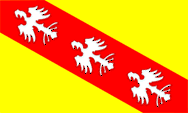 |
historische Flagge von Lothringen – historic flag of Lorraine Quelle/Source: nach/by: Flags of the World |
|
|
|
Bedeutung/Ursprung der Flagge – Meaning/Origin of the Flag: |
|
| Die Landesfarben von Elsaß-Lothringen entsprachen ursprünglich den Farben des Deutschen Reiches (1871–1918): Schwarz, Weiß und Rot. Sie charakterisieren Elsaß-Lothringen als Reichsland, also als nichtföderaler, zentral verwalteter Bestandteil des Reiches. | The colours of Alsace-Lorraine corresponded initially to the colours of the German Empire (1871–1918): black, white and red. They characterize Alsace-Lorraine as empire's country, so as nonfederal, central administrated element of the empire. |
| Am 29.12.1891 wurde eine Dienstflagge für das Reichsland Elsaß-Lothringen auf Grundlage der Reichsdienstflagge des Auswärtigen Amtes eingeführt. Zur Unterscheidung zeigt sie das gekrönte Wappen Elsaß-Lothringens im schwarzen Streifen am Liek. | On the 29th of December in 1891 was introduced an official flag for the empire's country Alsace-Lorraine on the base of the empire's official flag for the foreign office. For differentiation it shows the crowned coat of arms Alsace-Lorraine in the black stripe in the leech. |
| Elsaß-Lothringen, war den anderen Ländern des Deutschen Reiches durchaus gleichberechtigt. Es hatte ein eigenes, gewähltes Parlament (Landtag), eine eigene Landesverwaltung, eine eigene Landesregierung, eine eigene Landesverfassung. Jedoch gab es keinen Landesfürsten, wie bei den Ländern des Deutschen Reiches (außer den Hansestädten) sonst üblich. Seit 1911 war ein noch junger Angehöriger des regierenden Hauses Badens als elsässisch-lothringischer Landesfürst im Gespräch, der eventuell vom Landtag proklamiert bzw. bestätigt werden sollte. Mit dem Ausbruch des Krieges gab es allerdings erst mal andere Prioritäten. |
Alsace-Lorraine had, compared with the other countries of the German Reich
quite equal rights. It had its own elected parliament (Landtag), its own
provincial administration, its own government, its own constitution. However, in contrast to the other countries of the German Empire (except the Hanseatic cities) there was no ruling prince. Since 1911 there was in discussion a still young member of the ruling house of Baden as prince of Alsace-Lorraine, which should be eventually proclaimed or confirmed by the parliament. With the outbreak of war, there however rised other priorities. |
| Der Landtag des Reichslandes Elsaß-Lothringen nahm am 25.Juni 1912 einstimmig den von einem Ausschuß erarbeiteten Vorschlag einer rot-weiß gestreiften Flagge an, die in der linken Oberecke ein gelbes Lothringer-Kreuz trug. Der Beschluß wurde von den kaiserlichen Regierungsstellen allerdings nie umgesetzt, so daß es zu keiner Änderung kam. Die Flagge wurde aber privat und zu halboffiziellen Anlässen oft genutzt. Sie war bei deutschen Behörden und Militärs nicht gern gesehen, wurde aber auch teils noch während des Ersten Weltkriegs toleriert. Diese Flagge war eine Kombination aus den Farben des Elsaß (Rot und Weiß) und Lothringens (Rot und Gold). | On 25th
of June in 1912 the Landtag (Parliament) of the imperial province of
Alsace-Lorraine passed unanimously the by a committee developed proposal of
a red-white striped flag whith an yellow Lorraine Cross in the left upper
corner. This act was never implemented by the imperial authorities, so that there was no change. But the flag was often used for private and semi-official occasions. It was not well received by the German authorities and the military, but was also partly tolerated during the First World War. This flag was a combination of the colors of Alsace (red and white) and Lorraine (red and gold). |
| Am Endes Krieges wurde mit dem Abzug der deutschen Truppen am 11.11.1918 die Republik Elsass-Lothringen proklamiert, die sich Unabhängigkeit aber auch Schutz von Frankreich und dem Deutschen Reich versprach, sich jedoch in eine kommunistische Räterepublik wandelte. Darauf hin wurden französische Truppen zu Hilfe gerufen, die unter dem Beifall der Bevölkerung die Räterepublik beendeten. | At the end of the war, with the withdrawal of the German troops, the Republic of Alsace-Lorraine was proclaimed on 11th of November in 1918, hoping for independence but also protecion from France and the German Empire, however, the republic startet to transform into a Soviet Republic. Thereupon French troops were called in to help, who finished the Soviet Republic under the applause of the population. |
| Die Republik Elsass-Lothringen übernahm die 1912 geschaffene inoffizielle Flagge des Reichslandes Elsass-Lothringen. | The Republic of Alsace-Lorraine took over the in 1912 created unofficial flag of the imperial province of Alsace-Lorraine. |
| Quelle/Source: Ronald Preuß, Jürgen Kaltschmitt | |
Wappen – Coat of Arms: |
|
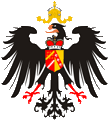 |
1871–1918, Wappen von Elsaß-Lothringen – coat of arms of Alsace-Lorraine, Quelle/Source: nach/by: Wikipedia (D) |
 |
1871–1918, Wappenschild von Elsaß-Lothringen – blazon of Alsace-Lorraine Quelle/Source: nach/by: Flags of the World |
|
|
|
Bedeutung/Ursprung des Wappens – Meaning/Origin of the Coat of Arms: |
|
| Das Wappen des Reichslandes Elsaß-Lothringen stellt den Reichsadler ohne preußischen Schild und Ordenskette dar. Der Reichsadler ist belegt mit einem fürstlich gekrönten Schild, der gespalten und vorne geteilt ist. Vorne oben erscheint das Wappen der Landgrafschaft Ober-Elsaß (goldenen Diagonale mit zweimal drei goldenen Kronen auf rotem Grund), unten das Wappen der Landgrafschaft Unter-Elsaß (weiße Diagonale mit Kanten im Lilienschnitt auf rotem Grund). In der zweiten Hälfte ist das Wappen des Herzogtums Lothringen sichtbar (rote Diagonale mit drei gestümmelten silbernen Adlern – Alérions genannt – auf goldenem Grund). | The coat
of arms of the empire's land Alsace-Lorraine depicts the empire's eagle
without Prussian shield and official chain of an order. The empire's eagle
is covered with a princely crowned shield, which is clefted and in front
divided. In front above appears the coat of arms of the Landgraviate of
Upper-Alsace (golden diagonal with twice three golden crowns on red ground),
below the coat of arms of the Landgraviate of Lower-Alsace (white diagonal
bar with egdes in lily cut on red ground). In the second half is positioned
the coat of arms of the Duchy of Lorraine (red diagonal with three crippled
silvery eagles – named Alérions – on golden ground). |
| Quelle/Source: Ronald Preuß | |
Landkarte – Map: |
| Landkarte von Elsaß-Lothringen – Map of Alsace-Lorraine |
|
| Quelle/Source: Wikimedia, By Of the photography : ComputerHotline [Public domain], via Wikimedia Commons |
Zahlen und Fakten – Numbers and Facts: |
|
|
|
|
|
|
|
|
|
|
|
|
|
Geschichte: |
| • Geschichte des Elsaß => hier klicken |
| • Geschichte Lothringens => hier klicken |
|
Geschichte Elsaß–Lothringens: 1870–1871 · Deutsch-Französischer Krieg, Schlachten bei Spichern und Gravelotte, deutscher Sieg binnen fünf Monaten, am 18.01.1871 wird in Versailles das Deutsche Reich proklamiert, Friedensvertrag am 26.02.1871, Frankreich muss das Elsaß und Teile Lohringens (Departement Meurthe, Arrondissements Saarburg und Château-Salins) das Deutsche Reich abtreten, Bildung des 'Reichslandes Elsaß-Lothringen' 1871–1873 · unmittelbare Regierung durch den Bundesrat des Deutsche Reichs 1874 · erste Wahlen zum Deutschen Reichstag, Bildung eines Landesausschusses für Elsaß-Lothringen 1879 · Einsetzung eines Statthalters als Oberhaupt das Reichslandes Elsaß-Lothringen 1911 · das Land erhält eine eigene Verfassung und wird den übrigen deutschen Bundesstaaten gleichgestellt, Wahl des ersten und einzigen Landtags des Reichslandes Elsaß-Lothringen, Annahme einer eigenen Landeshymne: "Das Elsäßische Fahnenlied" 1914–1918 · Erster Weltkrieg, die Westfront schiebt sich über den Oberelsaß 11.11.1918 · Waffenstillstand von Compiègne, Elsaß-Lothringen ist innerhalb von 15 Tagen von deutschen Truppen zu räumen, mit dem Abzug der deutschen Truppen bildet sich die Republik Elsass-Lothringen, die sich in eine kommunistische Räterepublik wandelte, gegen die französische Truppen zu Hilfe gerufen werden 17.–21.11.1918 · französische Truppen marschieren in Mülhausen, Colmar, Metz und Straßburg ein 17.10.1919 · Auflösung des Landes Elsaß-Lothringen durch Frankreich, 200.000 nach dem Jahr 1870 zugewanderte Deutsche werden vertrieben, nach Einspruch der USA durfte die Hälfte zurückkehren |
History: |
| • History of Alsace => click here |
| • History of Lorraine => click here |
|
History of Alsace–Lorraine: 1870–1871 · German-French War, battles of Gravelotte and Spichern, German victory in five months, on 18th of January in 1871 will be proclaimed the German Empire at Versailles, peace treaty on 26th of February in 1871, France has to cede to the German Empire Alsace and parts of Lorraine (Meurthe Departement, Arrondissements of Saarburg and Chateau-Salins), establish of the Imperial Province of 'Alsace-Lorraine' 1871–1873 · direct government by the Federal Council of the German Empire 1874 · first elections to the German parliament, formation of a National Committee for Alsace-Lorraine 1879 · installation of a governor as head of Alsace-Lorraine 1911 · the country gets its own constitution and gets equality among the other German states, first and last election for the parliament (Landtag) of Alsace-Lorraine, adopting of an own national anthem: "Das Elsäßische Fahnenlied" (Alsacian flag-song) 1914–1918 · First World War, the western front passes through Upper Alsace 11th of November 1918 · Armistice of Compiègne, Alsace-Lorraine is to vacate by German troops within 15 days, with the withdrawal of the German troops, the Republic of Alsace-Lorraine was proclaimed, but startet to transform into a Soviet Republic, French troops were called in to help, who finished the Soviet Republic 17th–21st of November 1918 · French troops marching in, in Muehlhausen (Mulhouse), Colmar, Metz and Strassburg (Strasbourg) 17th of October in 1919 · dissolution of Alsace-Lorraine by France, 200.000 after 1870 immigrated Germans have to leave the country, after an appeal of the USA it was allowed to return for the half |
| Quelle/Source: Atlas zur Geschichte, Wikipedia (D), Jürgen Kaltschmitt |
Ursprung des Landesnamens – Origin of the Country's Name: |
|
| Der Ursprung des Namens "Elsaß" geht auf die Zeit der Frankenherrschaft zurück. Es gibt zwei Erklärungen: Der Name kommt von dem Wort "Elisassen", was "fremde Bewohner" heißt (Sassen = Einwohner), bzw. vom Wort "Illsassen", was die "Bewohner der Ufers der Ill" heißt. Die Ill (ILL) ist ein Fluss, der im zentralen Elsaß parallel zum Rhein fließt und 10 km nördlich von Straßburg in den Rhein mündet. Auf französisch heißt das Land "Alsace". | The origin of the name "Alsace" goes back to the period of the Frankish rule. There are two explanations: The name comes from the word "Elisassen" which means "foreign residents" (sassen = inhabitants), or from the word "Illsassen" what means: "the inhabitants of the banks of the Ill". The Ill (ILL) is a river that flows parallel to the Rhine in central Alsace, and flows into the Rhine 10 km north of Strasbourg. In French the land is called "Alsace". |
| Der Name Lothringen geht auf einen Enkel Karls des Großen zurück, Lothar I., der bei der Teilung des Frankenreiches im Jahre 843 das Mittelreich von Friesland bis nach Italien erhielt. Der nördlichste Teil dieses Mittelreiches wurde "Lotharingen" genannt, wahrscheinlich die Domäne von Lothar. Um 911 entstand daraus das Herzogtum Lothringen unter Herzog Reginar, welches jedoch 953 in Ober- und Niederlothringen aufgeteilt wurde. Um 1106 wurde das Herzogtum Niederlothringen in Herzogtum Brabant umbenannt, Oberlothringen blieb als Herzogtum Lothringen bis 1801 bestehen. Teile Lothringens wurden 1871 Bestandteil des deutschen Reichslands Elsaß-Lothringen, das 1918 - nach dem Ersten Weltkrieg - an Frankreich abgetreten werden musste. Auf französisch heißt das Land "Lorraine". | The name
Lorraine goes back to a grandson of Charlemagne (Charles the Great), Lothar
I., who gets the central realm (from of Friesland to Italy) at the division
of the Frankish Empire in 843 AD. The northernmost part of this kingdom was
called "Lotharingen", probably the domain of Lothar. In the year 911 it has
developed into the Duchy of Lorraine under Duke Reginar, which was divided,
however, in 953 in Upper and Lower Lorraine. in the year 1106 the Duchy of Lower Lorraine was renamed in Duchy of Brabant, Upper Lorraine continued as Duchy of Lorraine to 1801. Parts of Lorraine became in 1871 part of the German Imperial Province of Alsace-Lorraine, which in 1918 – after the First World War – has to be ceded to France. In German the land is called "Lothringen". |
| Quelle/Source: RetroBib Retrobibliothek | |